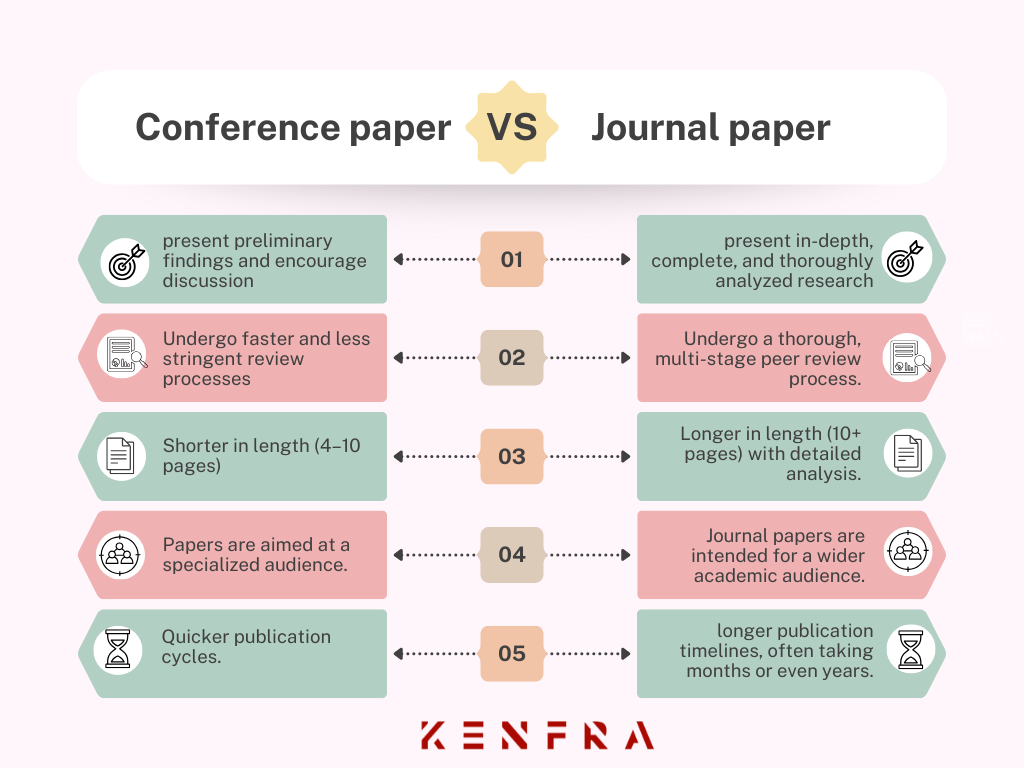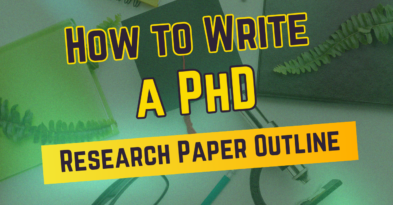How conferences help shape your research and career
mahisha mani2024-11-28T17:39:56+05:30What are conference papers?
Conferences are usually organised by professional societies or organisations and enable academics to present their research findings, discuss ideas, gather feedback and network. Papers presented at the conference are published in collections called conference proceedings.
Some papers or conferences may be unpublished and are only available from the authors. Papers may be re-edited and then published as journal articles or as a special issue of a journal or as a book
Difference Between Conference Papers and Journal Papers

- Purpose: present preliminary findings and encourage discussion, whereas journal papers offer comprehensive and finalized research
- Review Process: It undergoes quicker, less rigorous reviews; journal papers involve thorough, multi-stage peer reviews.
- Length: Papers are shorter (4–10 pages), while journal papers are longer (10+ pages) with in-depth details.
- Audience: It target specialized attendees; journal papers cater to a broader academic audience.
- Timeline: Faster publication cycles; journal papers take longer, often months or years.
Why PhD Graduates Submit Papers to Conferences
- Networking Opportunities:
It provides a platform for PhD graduates to network with leading experts, researchers, and potential collaborators in their field.
- Immediate Feedback:
Presenting at conferences allows PhD graduates to receive valuable feedback on their work, which can enhance the quality of their research before publication.
- Exposure to New Ideas:
Conferences expose PhD graduates to the latest research trends and developments, helping them stay up to date with advancements in their field.
- Building a Research Profile:
Submitting papers to conferences enhances a PhD graduate’s academic profile, showcasing their research and establishing credibility in the academic community.
- Skill Development:
Presenting research at conferences helps PhD graduates improve their public speaking, communication, and presentation skills, which are crucial for academic and professional success.
- Faster Publication Cycle:
Conference papers typically undergo a quicker review and publication process, allowing PhD graduates to disseminate their findings more rapidly.
- Opportunities for Collaboration and Funding:
This provides PhD graduates with opportunities to collaborate, gain insights for future projects, and explore potential research funding
Structure of Conference papers
- Title: Clearly represents the topic and focus of the paper.
- Abstract: Summarizes the paper’s purpose, methods, key findings, and conclusions in 150–250 words.
- Introduction: Provides background, introduces the topic, and explains the research significance.
- Objectives: Lists specific goals or hypotheses the paper aims to address.
- Methods: Describes research design, data collection, and analysis techniques.
- Results: Highlights key findings using text, tables, or visuals.
- Discussion: Interprets results, comparing them with prior research and emphasizing implications.
- Conclusion: Summarizes findings and includes recommendations or future research directions.
- References: Lists all sources cited.
- Acknowledgments: Credits contributors and funders.
For more information about conference paper inquiries, please contact Kenfra
Upcoming conference scheduled in India
2025 3rd International Conference on Smart Systems for applications in Electrical Sciences (ICSSES)








Leave a Reply